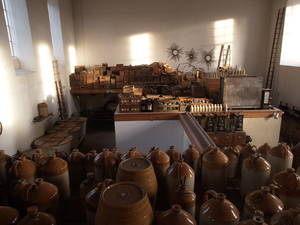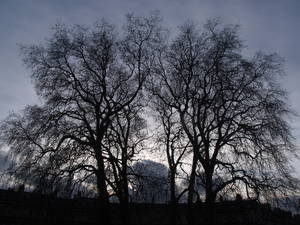Camilla needed a break from work, so we took last weekend off and visited Bath.
After an easy drive - we're thinking the train would make more sense next tiem - we put the car into the central long-term car park. Our first idea was to go to the Thermae Spa baths, but the queues outside that looked too long. So we did some shopping, going our our separate ways, as Camilla was mostly interested in clothing and homewares and I wanted to check out the bookshops.
Bath bookshops
Good Buy Books is a discount shop that carries the usual popular material, mostly non-fiction. Skoobs Secondhand Paperbacks, in the Guildhall Market, carries pretty much only popular paperbacks, mostly fiction. There wasn't much in either of these to tempt me. And Mr B's Emporium is a nice little independent bookshop.
Unfortunately the map I'd printed off Google put the marker in the wrong spot, so I managed to miss Topping Books, which looks like it would have been the most interesting bookshop in town.
(The next day I stumbled over the Oxfam bookshop, which doesn't have as interesting stock as the two in Oxford but is still a nice browse.)
WIth the bookshops not that exciting, I visited the Bath at Work museum. This preserves the workshops and offices of a small Bath metalworking and aerated drinks company (J.B. Bowler) set up in the 1870s and shut down in the 1960s. It gives a good feel for the flexibility and ingenuity - but also artisanal scale - of British small industrial firms during the period. There are also more general displays on the history of Bath industry and commerce.
While in the area I took a look at the Circle, which is one of the architectural highlights of Bath, a perfect circle of Georgian terraces around a central space dominated by five huge trees (which were nicely silhouetted against the bright clouds of evening as I approached from the east).
I met up with Camilla and we had dinner in a Thai restaurant, then picked up the car and drove to our B&B south of the Avon.
The Sunday was wet and miserable, raining pretty much all day. We spent it visiting museums.
The Roman Baths were interesting, but not a "must see" site by any means and rather too expensive. Not that much of the Roman baths are actually intact, while the excavated material in the museum is fairly limited. (The included audio guides was, as usual, annoying - a printed version would have been vastly easier to use and, for me, maybe three times faster to extract information from.) The best part of our visit by far was a talk by a guide, who went off on what was surely his own angle, emphasizing the historiographical context - how we know (or don't know much) about Roman Britain and how attitudes to history and archaeology have changed since the baths were uncovered in the 18th century.
The Assembly Rooms and the Fashion Museum underneath them were well worth the visit. The Rooms have been restored and one can just imagine the characters from an Austen novel appearing there, while the Fashion Museum is just the right size (I'm all for nice frocks, but in moderate quantities).
The Jane Austen Centre was disappointing. A quarter of an hour talk on Jane Austen and her family was ok - the young woman giving it was lively and entertaining - but didn't offer much for someone who'd read a biography. The displays are limited (the most interesting for me was some background on the filming of Persuasion, but that was largely because I know so little about cinema). And a fifteen minute film again offered little that was new to me. There was an emphasis on Austen's connections with Bath and the time she spent there, obviously, and in better weather an Austen walking tour might have been more interesting.
The Herschel Museum of Astronomy, a little to the west of the city centre, is in the terrace house where Herschel and his sister lived while in Bath - and where Uranus was discovered. There's some fascinating background on the Herschels, who I didn't know much about. He started off playing in an army band in Hanover and originally worked in Bath as a musician, before taking up astronomy and eventually obtaining royal sponsorship. It was also striking to see the extent to which a scientist in the 17th century did everything himself (building telescopes and grinding lenses).
We did some more shopping, looked around Bath Abbey, then headed home, driving around the Royal Crescent on the way out of town just to get a look at it.


